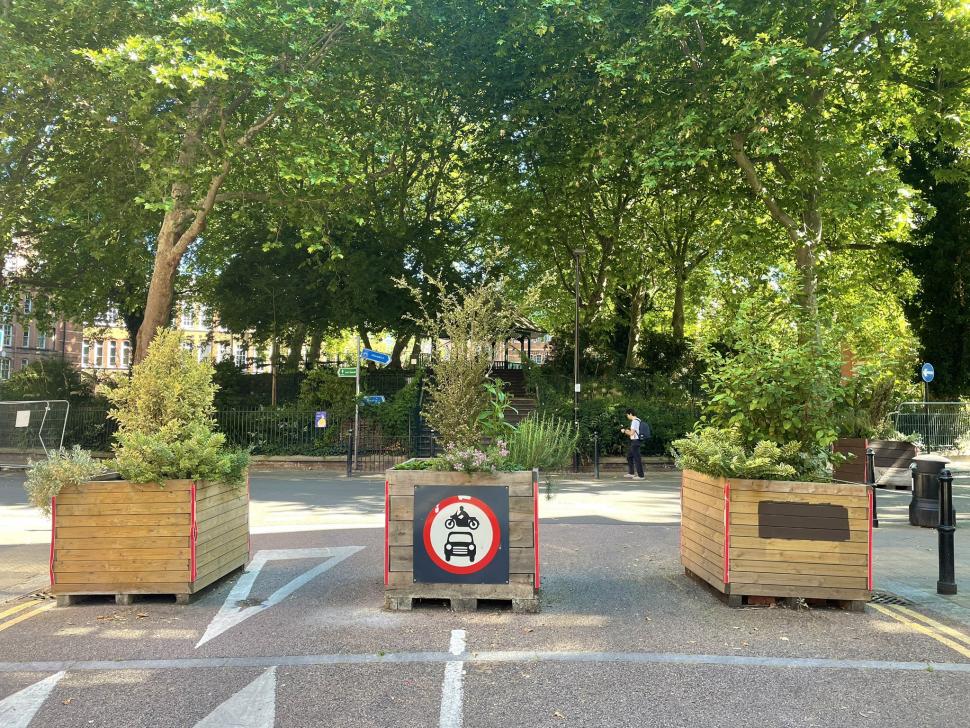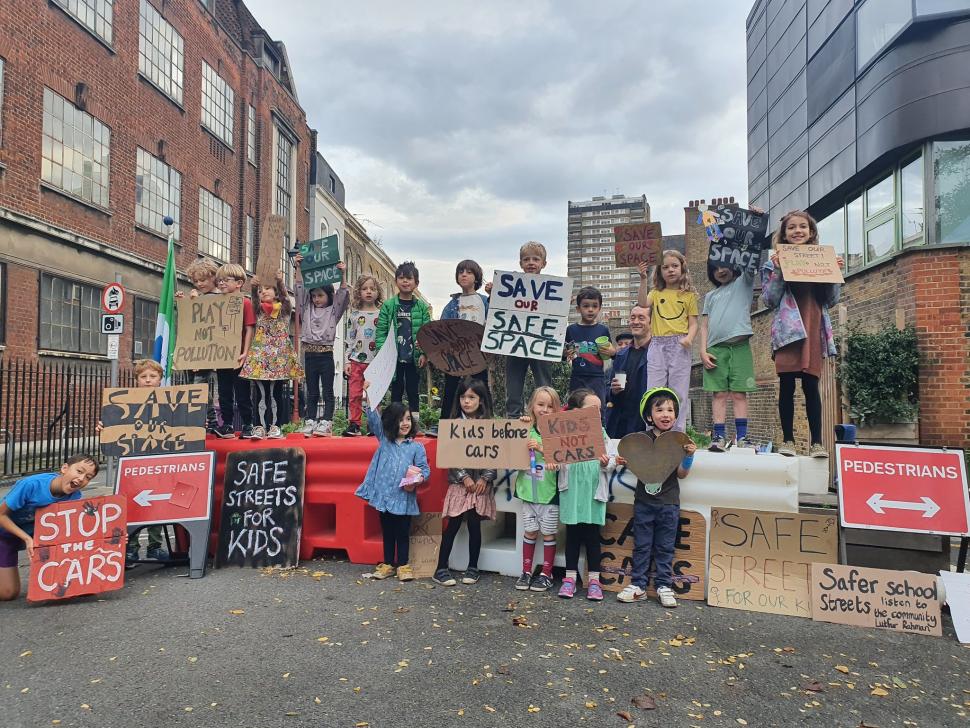- News
- Reviews
- Bikes
- Components
- Bar tape & grips
- Bottom brackets
- Brake & gear cables
- Brake & STI levers
- Brake pads & spares
- Brakes
- Cassettes & freewheels
- Chains
- Chainsets & chainrings
- Derailleurs - front
- Derailleurs - rear
- Forks
- Gear levers & shifters
- Groupsets
- Handlebars & extensions
- Headsets
- Hubs
- Inner tubes
- Pedals
- Quick releases & skewers
- Saddles
- Seatposts
- Stems
- Wheels
- Tyres
- Tubeless valves
- Accessories
- Accessories - misc
- Computer mounts
- Bags
- Bar ends
- Bike bags & cases
- Bottle cages
- Bottles
- Cameras
- Car racks
- Child seats
- Computers
- Glasses
- GPS units
- Helmets
- Lights - front
- Lights - rear
- Lights - sets
- Locks
- Mirrors
- Mudguards
- Racks
- Pumps & CO2 inflators
- Puncture kits
- Reflectives
- Smart watches
- Stands and racks
- Trailers
- Clothing
- Health, fitness and nutrition
- Tools and workshop
- Miscellaneous
- Buyers Guides
- Features
- Forum
- Recommends
- Podcast
 Arnold Circus LTN (via Bob From Accounts on Twitter)
Arnold Circus LTN (via Bob From Accounts on Twitter)Police urge against scrapping low traffic neighbourhood, saying it reduces crime
Police in Bethnal Green, East London, have urged Tower Hamlets Borough Council not to scrap a Liveable Streets scheme, saying that it has resulted in a reduction in antisocial behaviour-related crime.
The appeal was made in their response to a consultation into removing the low traffic neighbourhood (LTN) scheme around Arnold Circus on the fringes of the popular night-time area of Shoreditch.
The Arnold Circus Liveable Streets initiative was put in place in 2021, along with similar initiatives elsewhere in the borough, with the council controlled by Labour at the time.
In last May’s local elections, however, the Aspire Party won 24 of the 45 seats and since then the borough’s pro-car Mayor Lutfur Rahman has been rolling back initiatives aimed at reducing motor vehicle traffic and promoting active travel.
Astonishingly, on their retrograde mission, @TowerHamletsNow and @LutfurRahmanTH want to remove these filters around Arnold Circus so that non-local traffic can cut through to Shoreditch High Street/Bethnal Green Rd, in a bid to make it more polluted and unsafe for the locals pic.twitter.com/vHWOg0KOho
— Bob From Accounts 🚲 (@BobFromAccounts) July 8, 2022
The council also ended School Streets initiatives in the borough, despite opposition from teachers, parents and pupils, with protests against the reversal in policy taking place outside a primary school before Christmas.
> Children take to the barricades to save School Street
One of the tropes often put forward by opponents of LTNs, which aim to restrict through traffic in residential areas while maintaining access for people who live there, is that they encourage crime and other antisocial behaviour, despite evidence to the contrary.
For example, a study in 2021 that examined LTNs put in place in London in 2020 found that “Overall crime trends in and around LTNs were more favourable than the background trend in Outer London, and similar to or slightly more favourable than the trend in Inner London.”
Now, it has emerged that Bethnal Green Police, in response to an initial consultation held in July and August last year into the Weavers Ward Liveable Streets scheme, which includes Arnold Circus, told Tower Hamlets in no uncertain terms that it had been hugely beneficial in reducing crime in the area.
The police response, posted to Twitter as a screenshot by the Clean Bethnal Green account, highlighted that antisocial behaviour had fallen by more than a third in the six months after the LTN was put in place, compared to the preceding six months, and warned that removing could see levels of crime, as well as road danger rise.
In response to For Arnold Circus there were 11 ASB and 5 drugs calls in the past 6 months compared with 36 for ASB and 6 for drugs in the 6 months pre-implementation which is quite a significant drop and in-line with the response from the Safer Neighbourhood Team responsible for this area:
I consider the road management measures that were brought in to have had a positive effect. I am surprised there is consideration to remove them. Of particular concern are the proposed amendments to the roads further West. Prior to the changes there was an enormous level of car enabled ASB, drug dealing, NOx balloon usage etc which made life a misery for many of the residents in the streets around Arnold Circus and surrounding. This was due to the spill-out from the Shoreditch NTE. This has been dramatically reduced by the traffic management changes and forces those committing crime back onto the well-lit, CCTV covered main roads which are much easier for us to manage.
In summary, the MPS is concerned with the plans to remove these measures both in terms of a potential increase in crime, specifically ASB related, and also increasing road danger.
Quietly buried in @TowerHamletsNow consultation on removing Liveable Streets is this concerned response from the police given the positive effects in reducing crime and ASB. pic.twitter.com/NuzObDBhOE
— CleanBethnalGreen 🇵🇸 (@BethnalCleen) February 9, 2023
The consultation report reveals that a number of other respondents also expressed concerns about a potential rise in antisocial behaviour if the LTN were scrapped, with the following three responses also highlighted in the consultation report.
Our local area has had a problem with antisocial driving for a long time, including speeding, drug dealing from cars, modified cars with loud exhausts that cause noise pollution, noise from car horns and ‘car bars’ with people drinking and taking drugs while playing loud music from their cars late at night (and then littering and urinating on local properties). The traffic restrictions recently introduced have significantly reduced this antisocial behaviour and reversing them would encourage it again.
Arnold Circus is now a pleasant area, it used to be a drug area, with lots of anti-social behaviour, making it unpleasant and unsafe. A direct result of closures and people caring for their local environment.
I live on Calvert Avenue, which is obviously greatly affected by the huge amount of traffic that used to use the street to go around Arnold Circus. Since the liveable streets closures the change has been huge, it is quiet and the amount of ASB behaviour has been greatly reduced due to restricted access.
According to the 2021 Census, at 66.4 per cent the London Borough of Tower Hamlets has one of the highest levels of households with no access to a car or van in the whole of England and Wales.
Drilling down further, the Columbia Road Middle Layer Super Output Area (MSOA), which includes Arnold Circus, shows 65.9 per cent of households having no access to a car or van, while in adjacent areas such as the Shoreditch MSOA to the west and Brick Lane North MSOA to the south, that rises to, respectively, 82.1 per cent and 72.7 per cent.
Those low levels of access to a car or van were highlighted by Tower Hamlets Wheelers, the local group affiliated to the London Cycling Campaign, in its response to the consultation. The group said:
Tower Hamlets Wheelers strongly opposes the removals of the elements of the Liveable Streets programmes listed above. The closure of roads to through motor traffic has opened these roads to those who walk and cycle – the proposed changes would take away all of the gains in safety and comfort.
All properties in the Liveable Streets scheme areas are still accessible by car, and residents of the scheme areas expressed their support for the closures following extensive consultations. Tower Hamlets has one of the lowest car ownership rates in London, so the proposals will increase convenience for drivers from outside the borough and the minority of residents who own cars, while subjecting all of the borough’s residents to increased levels of road danger and air pollution.
The council is continuing to consult on the Liveable Streets scheme, including its proposals to remove the interventions made in and around Arnold Circus.
That consultation closes at 2359 hours tomorrow, Sunday 12 February, and can be found here.
Latest Comments
- Daclu Trelub 32 min 6 sec ago
They should lay off the pies, then.
- Pub bike 1 hour 37 min ago
On the website one of the bikes on which they show the device fitted is a mid-motor e-bike. This seems like an unusual application but then maybe...
- stonojnr 3 hours 37 min ago
the police barely do anything with close pass data, like just analyse the clear geographic hot spots and setup camera vehicles themselves....
- Jogle 4 hours 14 min ago
I bet those ambulances have never paid tax in their lives! They should get out of the way of hard working, tax paying, otherwise law abiding cars
- mark1a 4 hours 49 min ago
Have a like for using the word "profligate" 👍😁.
- Capt Sisko 6 hours 31 min ago
Just like folding helmets. Every couple of years someone thinks, that's a brilliant idea, I'll sell millions, I'll make a fortune. Erm, no.
- eburtthebike 7 hours 49 min ago
He understands it: his social media site is called Truth Social or somesuch.
- chrisonabike 9 hours 12 min ago
Because they can....
- Secret_squirrel 9 hours 17 min ago
If the employee's of Komoot are mostly German employees on standard German contracts the new Italian owners are in for a bit of a shock....


Add new comment
11 comments
TH is a very immigrant rich borough of London, with huge Bangladeshi and Pakistani and African country communitites. Why is the take up of cycling in those communitites so shockingly low compared to other demographics? Many of the council leaders seems intent on a car culture no matter what. You see it on the streets.
All kinds of reasons but one observation in NL is that immigrants from countries with no tradition of cycling cycle much less than the dutch even after some time in NL. Not a giant surprise. Just shows that people take time to change and maybe that transport choice is like other activities that people engage in - not divorced from culture.
But immigrants in NL still cycle more than the average in their countries of origin. I wonder why?
https://www.aviewfromthecyclepath.com/2011/08/distances-fuel-usage-and-i...
Typical lazy police, wanting less crime so they can sit in the station and play cards all day
Brigand's deterred from committing their crimes without getaway vehicles...
Who'd have thought that???
That graphic has a strangely misleading percentage line - is it to make 65.9% look like 90%?
I think you mean "corrupt pro-car mayor Lutfar Rahman"....
WTAF is a Middle Layer Super Output Area? Anyone?
A level of data gathering.
But what is NTE, as in "spill-out from the Shoreditch NTE"?
Nighttime economy
https://www.met.police.uk/foi-ai/af/accessing-information/met/glossary/
Night Time Economy. Bars, clubs etc - things open at night.
Middle Layer Super Output Areas are medium-sized, aggregated areas of census statistics, contained within local authorities